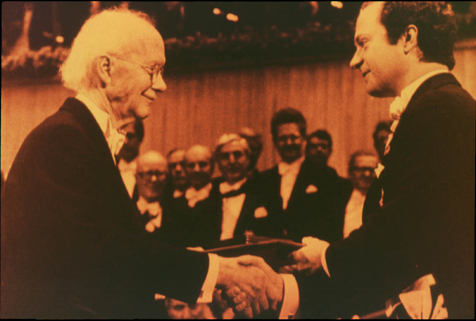
Faculty Research 1980 - 1989
Loss of stem cell repopulating ability upon transplantation. Effects of donor age, cell number, and transplantation procedure.
Document Type
Article
Publication Date
1982
Keywords
Animal, Bone-Marrow: cy, tr, Cell-Count, Erythropoiesis, Female, Hematopoietic-Stem-Cells: cy, re, Male, Mice, Mice-Inbred-CBA, Mice-Inbred-C57BL, Parabiosis, SUPPORT-U-S-GOVT-P-H-S, Transplantation: mt
First Page
1767
Last Page
1779
JAX Source
J-Exp-Med. 1982 Dec 1; 156(6):1767-79.
Grant
AM25687, AG00594, AG01755
Abstract
Long-term functional capacities of marrow cell lines were defined by competitive repopulation, a technique capable of detecting a small decline in repopulating abilities. There was little or no difference between cells from old and young donors, but a single serial transplantation caused a large decline in repopulating ability. Varying the numbers of marrow cells transplanted into the initial carrier from 10(5) to 10(7) did not alter the ability of the carrier's marrow cells to repopulate in competition with previously untransplanted cells. This ability was improved only in carriers that had received 10(8) marrow cells, although deleterious effects of transplantation were still present. These effects were not solely caused by cell damage from the transplantation procedure, because transplantation by parabiosis, or recovery from sublethal irradiation without transplantation, reduced repopulating abilities as much as transplanting 10(5) to 10(7) marrow cells. The transplantation effect also was not caused solely by irradiation, because the same effect appeared in unirradiated W/Wv carriers. The transplantation effect was more pronounced when donors were identified by hemoglobin type than by chromosome markers, implying that nonerythroid cell lines may be less affected by transplantation than erythroid precursor cells. When the effects of a lifetime of normal function and a single transplantation were compared, the latter caused 3-7 times more decline in repopulating abilities of phytohemagglutinin-responsive cell precursors, and at least 10-20 times more decline in erythroid cell precursors. Stem cell lines can be serially transplanted at least five times before losing their ability to repopulate and save lethally irradiated recipients or to cure genetically anemic mice. Therefore, if transplantation causes an acceleration of the normal aging process, these figures suggest that stem cells should be able to function normally through at least 15-50 life spans.
Recommended Citation
Harrison DE,
Astle CM.
Loss of stem cell repopulating ability upon transplantation. Effects of donor age, cell number, and transplantation procedure. J-Exp-Med. 1982 Dec 1; 156(6):1767-79.

